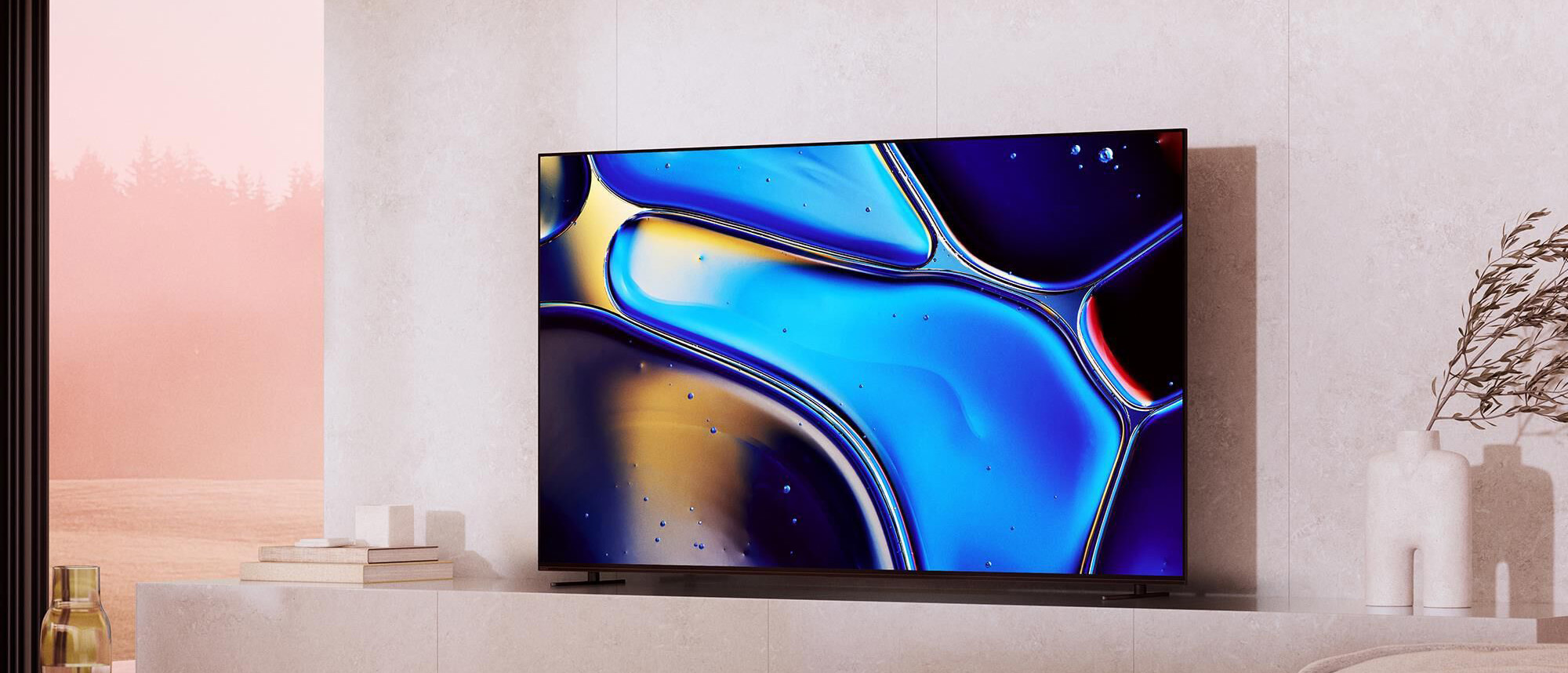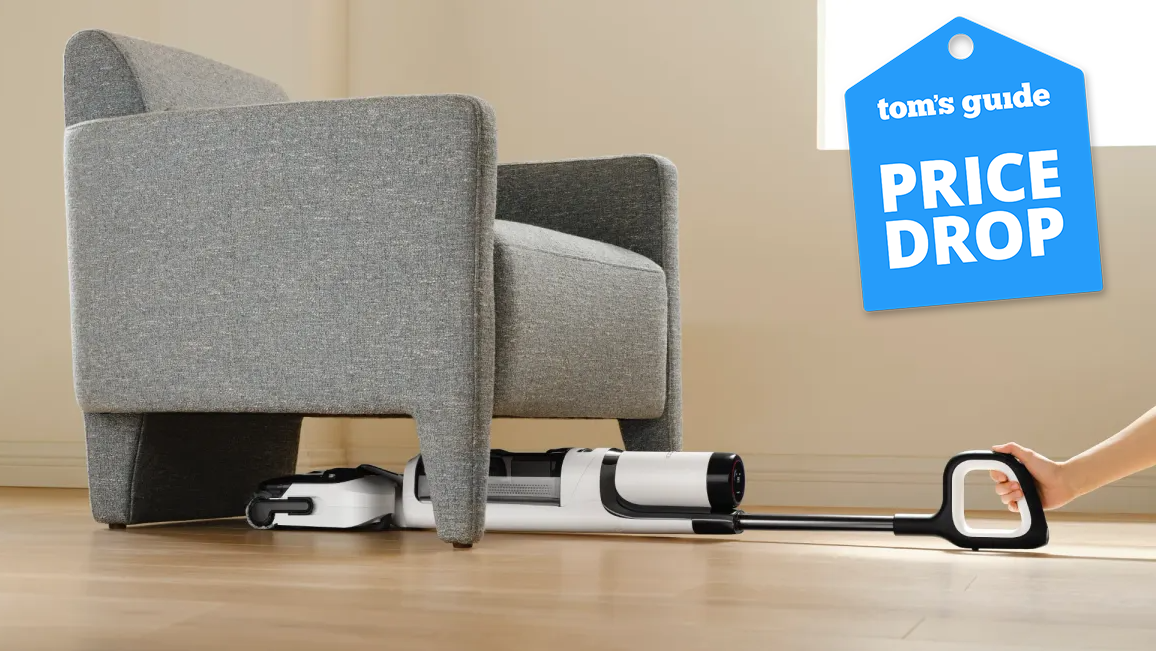Tom's Guide Verdict
A beautiful and powerful OLED TV, the Sony Bravia 8 brings to bear Sony’s full arsenal of the entertainment giant’s picture and gaming technologies. The result is largely positive, but its dim Professional mode and stiff, brighter competition hold the Bravia 8 back.
Pros
- +
Generally high picture quality
- +
Powerful Google TV smart interface
- +
Well-designed remote control
- +
Has ATSC 3.0 tuner
Cons
- -
Professional mode requires tweaking
- -
Only two HDMI 2.1 ports
- -
Mediocre game response time
Why you can trust Tom's Guide
Price: $2,799.99
Screen size: 65 inches
Model: K-65XR80
Resolution: 3,840x2,160
HDR: HDR10, HLG, Dolby Vision
Refresh Rate: 120Hz
Ports: 2 HDMI 2.1, 2 HDMI 2.0, 2 USB
Audio: TK
Smart TV Software: Google TV
Size (without stand): 56.9x32.8x1.5 inches
Weight (without stand): 49.2 pounds
As the mid-tier offering in its 2024 line of TVs, the all-new Sony Bravia 8 OLED carries some hefty expectations and faces heavy competition both from other manufacturers and within its own family. Like its predecessor, the Sony A80L, the Bravia 8 is a feature-packed set that’s loaded not just with cutting-edge picture technologies, but also head-of-the-class sound, dazzling gaming capabilities, a powerful smart operating system, and plenty of extras.
This isn’t a cheap set, though. It’s priced at $2,799 but can be found on sale for about $900 less, and that puts it in the running with TVs from LG and Samsung that offer about as much as this one does — and in some cases more.
For all that the Bravia 8 gets right, its few imperfections might be enough to give you pause depending on what you want to watch and how you like to game. In short, the Bravia 8 is still an excellent OLED, but maybe not the best OLED TV for everyone.
Sony Bravia 8 OLED TV review: Pricing and availability
The Bravia 8 is Sony’s main OLED in 2024, slotted into the company’s lineup between two Mini LED QLED sets, the Bravia 7 and the new flagship Sony Bravia 9. Last generation’s top QD-OLED model, the Sony Bravia XR A95L, is still for sale as well and, despite being $1,000 more, may be worth considering if you don’t mind buying a TV from last year.
Luckily, choosing the best size for your budget and home is a bit easier, as there are only three variations:
- Sony K-55XR80 (55-inch): $1,999.99 | Sale: $1,599.99
- Sony K-65XR80 (65-inch): $2,799.99 | Sale: $1,899.99
- Sony K-77XR80 (77-inch): $3,899.99 | Sale: $2,899.99
We tested the 65-inch model for this review, however, because all three versions of the Bravia 8 have the same hardware and utilize the same picture-processing methods, we expect performance among them is likely to be comparable. Not sure which size screen you should buy? Check out our ‘What size TV should you buy?’ guide.
Sony Bravia 8 OLED TV review: Design
Most OLED TVs are quite thin, and the Bravia 8 is no exception — though unlike some, it’s not perilously svelte. The 56.9 x 32.8 inch set is only 1.5 inches at its thickest point, and the screen itself is only about 0.3 inch deep. You’ll still want a second pair of hands to help you set up the TV (it weighs 49.2 pounds), but it never feels flimsy or unsafe. Pressing a button underneath the front panel lets you power the TV on or off; change the volume, channel, or input; and restart the TV.
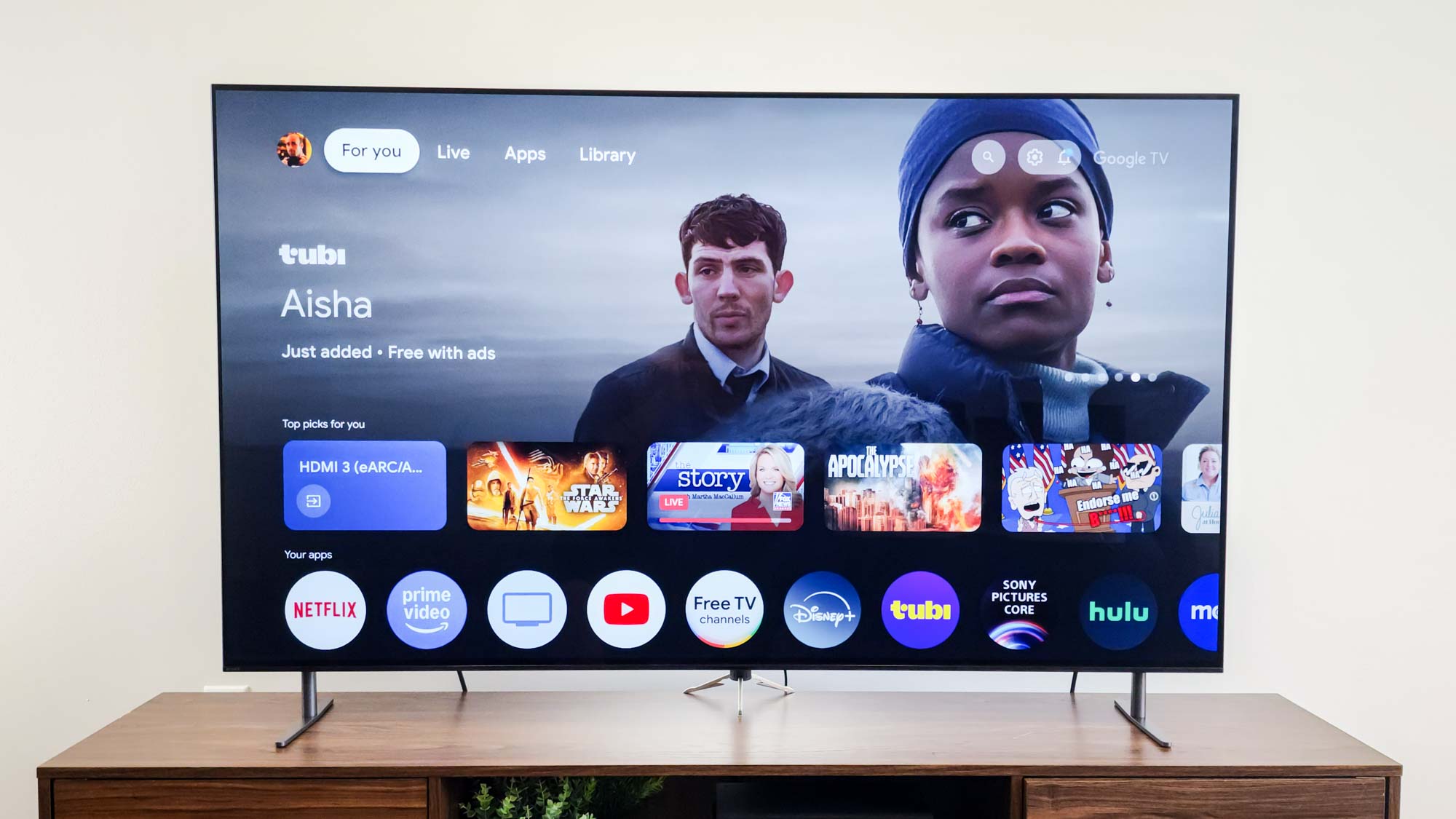
Sony has continued its use of a square design on the rear panel, giving the entire thing a stylish look (for those who will ever see it, anyway). Snap-on panels hide from view the ports and extra stand connectors (see below), though the various components of the audio system are visible. There are 300x300mm VESA holes for wall mounting the Bravia 8, too.
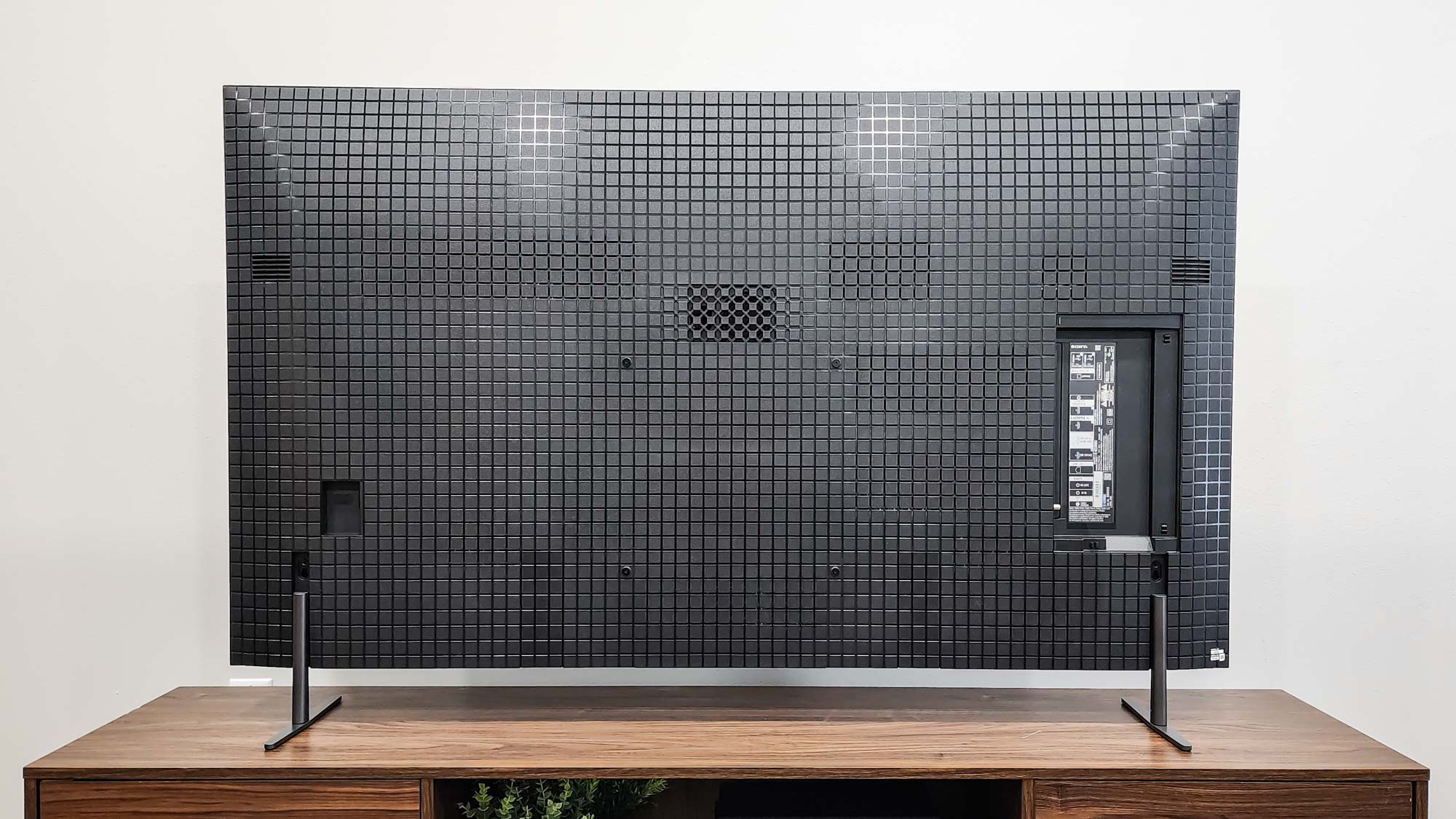
You can, of course, place the Bravia 8 on an entertainment center or table instead. The included stand, which consists of two feet that screw into holes on the TV’s rear panel, is easy to install, but its configurability is even better. You can set up the stand in any of four positions: the feet on the inside or the outside, and either nearly flush against the supporting surface or raised up a little over 3 inches to accommodate a soundbar beneath. Plastic covers attach to the back of the feet to ensure they look good from every angle, too.
Sony Bravia 8 OLED TV review: Ports
All of the Bravia 8’s ports are located within a panel just inside the TV’s left edge. There’s no lack of the basics: a coaxial cable connector, IR in, RS-232C, Ethernet, four HDMI (see the next paragraph), S-Center speaker in, S/PDIF optical audio out, and two USB ports (one USB 2.0 and one USB 3.0).
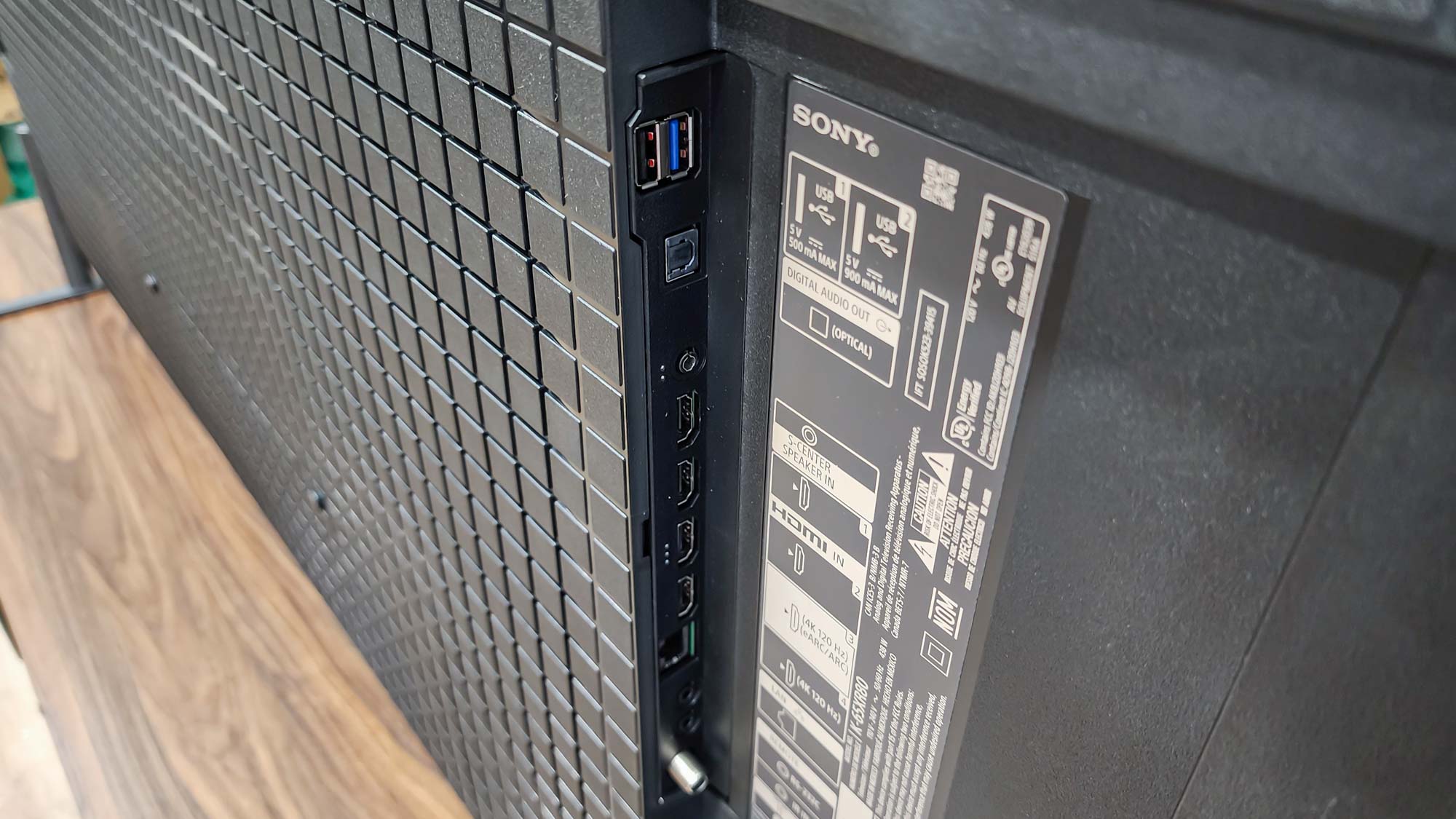
The good news is that two of the HDMI ports support the newer and more powerful HDMI 2.1 standard, which allows for features such as 4K at 120Hz, Variable Refresh Rate (VRR), and Auto Low-Latency Mode (ALLM). One of these ports is also equipped with eARC and ARC for expanding the TV’s sound capabilities. The bad news is that the other two ports are HDMI 2.0. Sony is the one major holdout with this, and though you may not need more than two HDMI 2.1 ports now, the absence on Sony’s sets is conspicuous given that Samsung and LG use exclusively these newer ports.
Sony Bravia 8 OLED TV review: How We Test
We follow a standard testing protocol for every TV we review at Tom’s Guide. Our benchmarks include a series of technical and subject tests designed to rate the set’s performance. For our technical tests, we use a Jeti spectraval 1501-HiRes spectroradiometer, a Klein K10-A colorimeter, a Murideo 8K-SIX-G Metal pattern generator, and Portrait Displays’ Calman TV-calibration software to take measurements. We also use a Leo Bodnar 4K Input Lag Tester for determining the TV’s gaming prowess.
Subjective tests vary based on the reviewer, but usually feature anecdotes from a diverse selection of movies, TV shows, and other content reflecting the types of things you may actually want to watch on the TV. For a more detailed look at what we do and how we do it, check out our “How we test TVs” page.
Sony Bravia 8 OLED TV review: Performance and test results
Sony’s OLED TVs have been impressing us with their picture quality for years, and the Bravia 8 continues that tradition — as long as you don’t mind tweaking its Professional Mode to up the brightness.
| Row 0 - Cell 0 | Sony Bravia 8 OLED | LG C4 | Samsung S90C | Sony A80L |
| SDR Brightness (10%, in nits) | 287 | 296 | 257 | 224 |
| Delta-E (lower is better) | 3.3264 | 1.8201 | 1.3184 | 3.3797 |
| Rec. 709 Gamut Coverage | 99.65 | 98.9136 | 98.6903 | 109.529 |
| HDR Brightness (10%, in nits) | 815 | 1049 | 1073 | 676 |
| UHDA-P3 Gamut Coverage | 99.11 | 98.15 | 99.76 | 99.08 |
| Rec. 2020 Gamut Coverage | 75.01 | 72.27 | 74.94 | 73.27 |
| Input Lag (ms) | 12.6 | 12.9/9.2 (Boost) | 9.2 | 16.3 |
The set’s deep and multifaceted picture processing, which Sony has been finely honing over the last several years, turns out clean, attractive pictures in almost every situation. My suite of test movies currently includes Avatar: The Way of Water, Barbie, Dune: Part Two, Mission: Impossible—Dead Reckoning, Oppenheimer, and Spider-Man: Across the Spider-Verse, and their vibrant colors and unimpeachable black levels (OLED TVs have infinite contrast because black pixels are truly turned off) made them sumptuous and cinematic from every viewing angle.
The Bravia 8’s color isn’t quite as accurate as you’ll find on either the LG C4 or the Samsung S90C, but it’s an improvement over the aforementioned A80L, and still looks good on screen. Its coverage of the UHDA-P3 HDR color gamut is on par with the A80L’s, and just a shade behind the S90C’s, and it squeaked just to the front of the pack as far as the Rec. 2020 gamut, covering 75.01%.
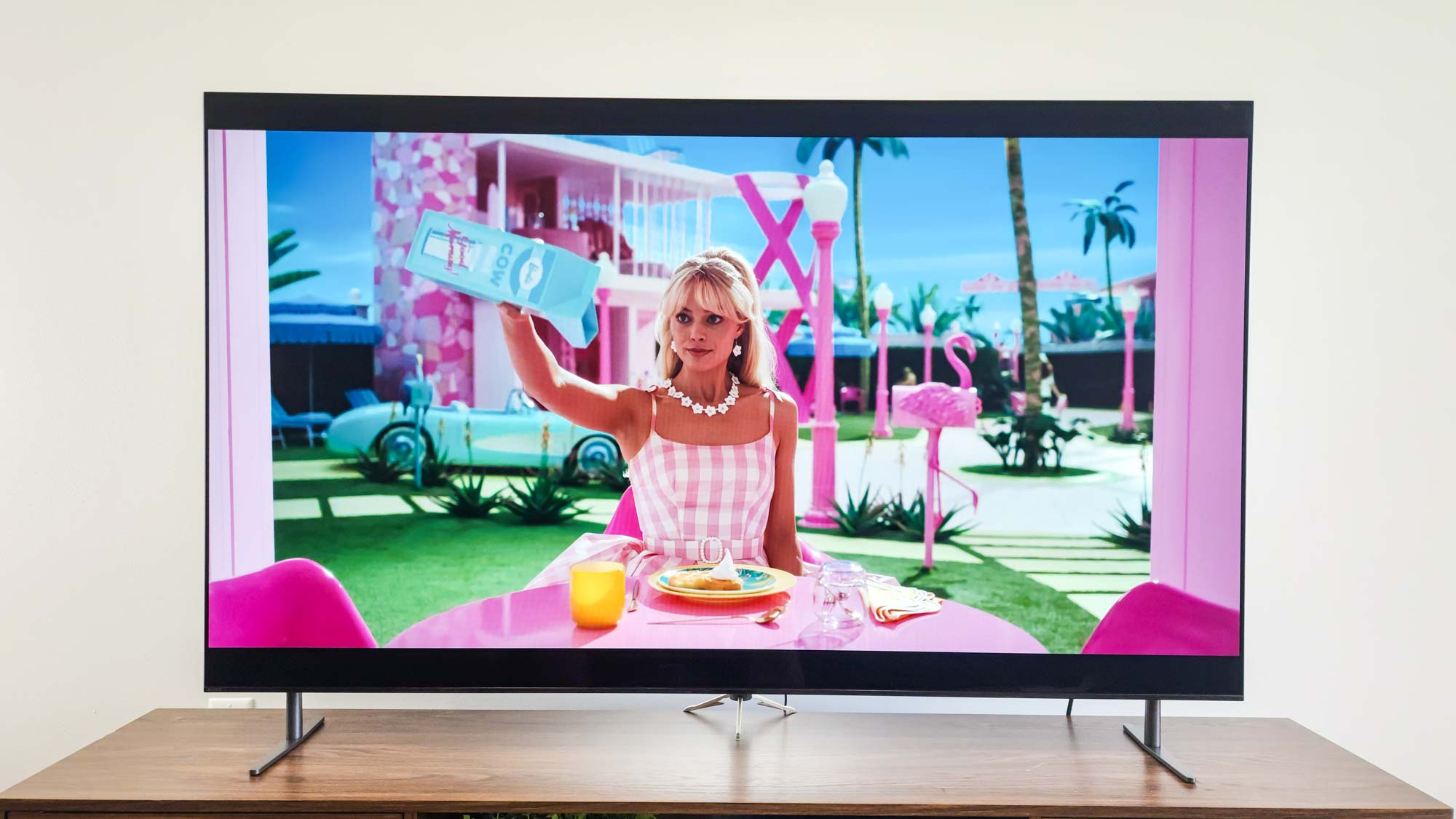
But the Bravia 8’s greatest strength is also its main stumbling block. We do our performance testing (and a fair chunk of our subjective evaluation) of TVs in their best, or most accurate, picture modes. On the Bravia 8 and other recent Sony TVs we’ve seen (including the Bravia 9 and the A95L), that means Sony’s Professional mode. Unlike Filmmaker Mode, which is designed to bring the TV as closely in line as possible to Hollywood cinematic standards, Professional mode instead mimics Sony’s own line of ultra-high-end (and ultra-expensive) Professional Master Monitors.
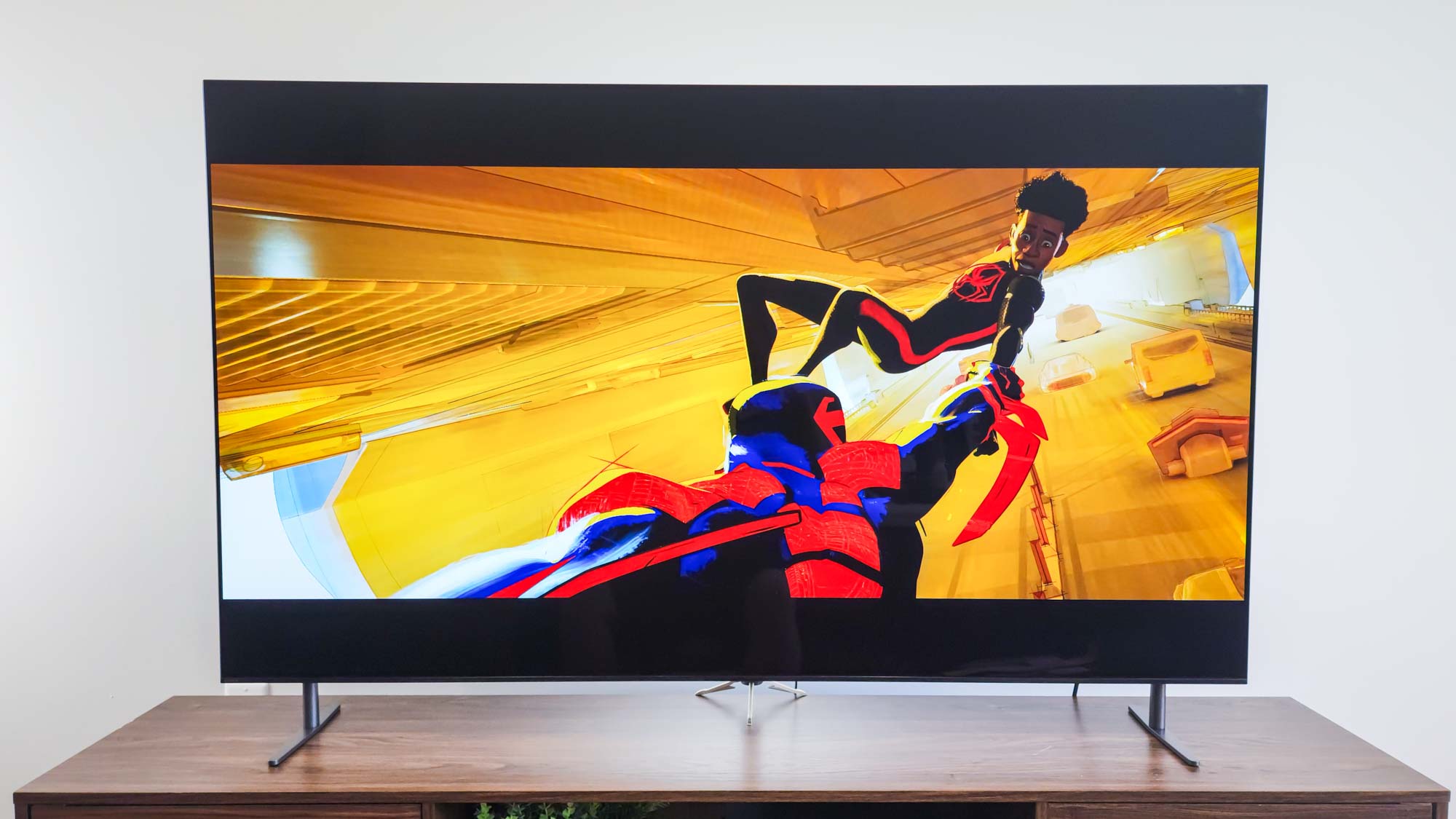
In SDR, we measured the set’s peak brightness on a 10% white window at 99 nits, the lowest we’ve seen on any TV.
These are necessarily dim, and thus so is Professional mode — and that raises issues. In SDR, we measured the set’s peak brightness on a 10% white window at 99 nits, the lowest we’ve seen on any TV. Switching to HDR, the Bravia 8’s result (815 nits) was still more than 200 nits lower than we measured on the LG C4 or the Samsung S90C (though 139 nits higher than last year’s A80L). You can obviously go in and manually raise the brightness in this mode — something we absolutely recommend doing — but don’t be surprised when, out of the box, images appear dimmer than you’d expect.
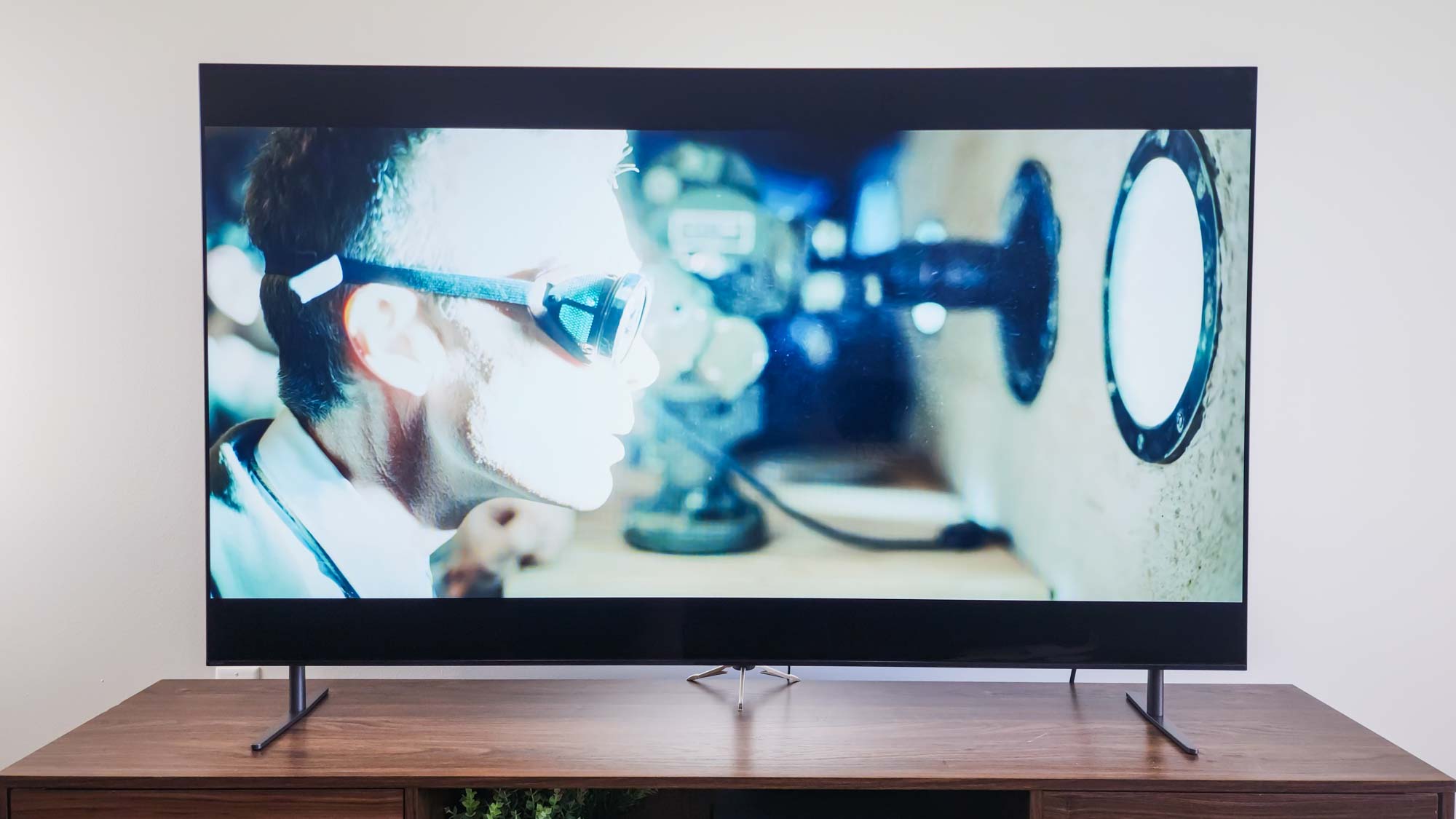
And, in practice, the low light levels were hard to ignore. For as gloriously crisp as the black-and-white scenes in Oppenheimer looked, the many heavily shadowed scenes of Dune: Part Two were just plain difficult and occasionally unpleasant to watch, as the Bravia 8’s highlights struggled to compensate for how much of the screen was bathed in black. Watching something this way in a bright room can make movies, especially ones in SDR, the dreary overtone of viewing it through a polarized film.
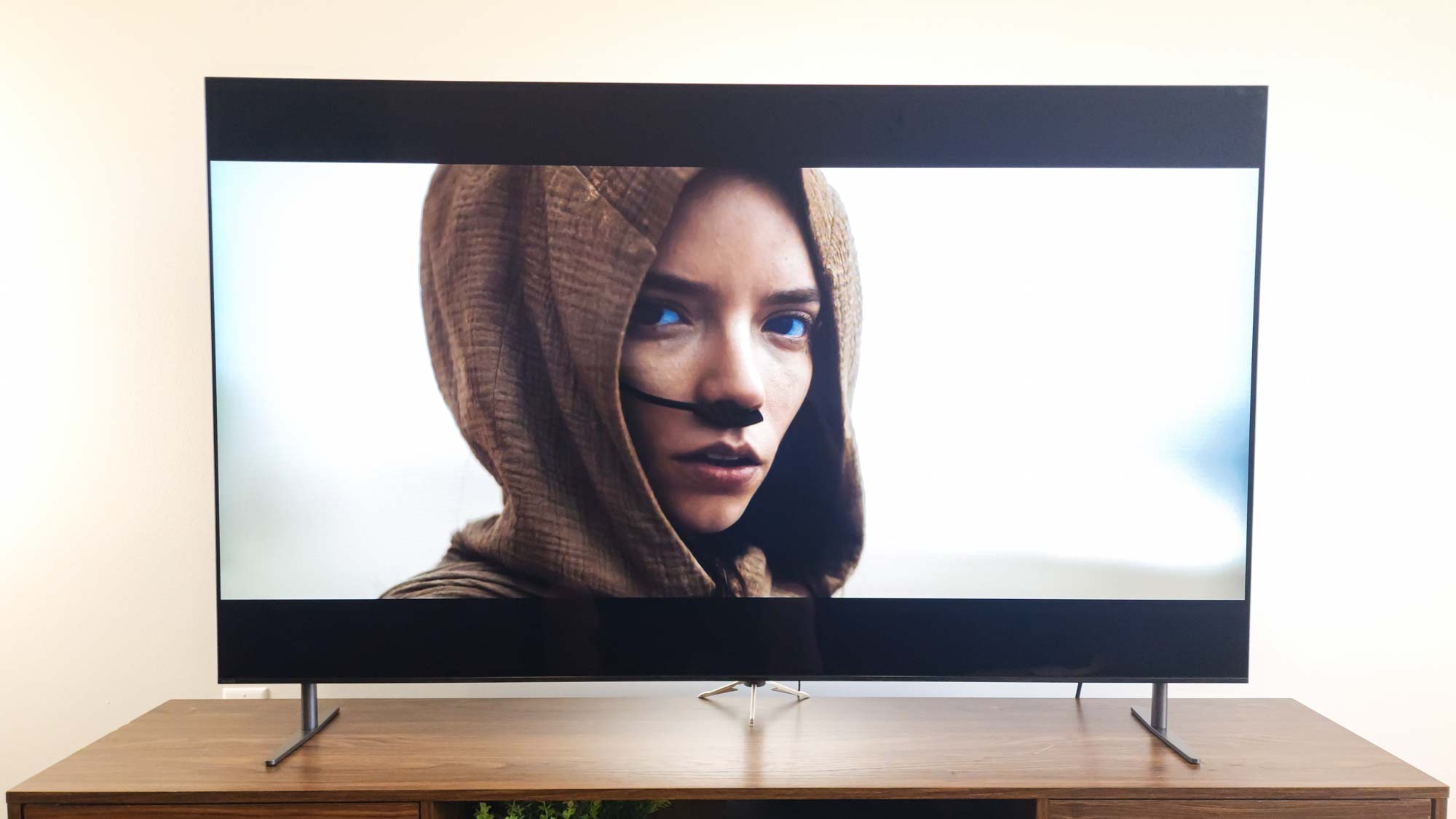
Switching to the similar-but-brighter Cinema mode improves matters, and if that’s still too dark for your tastes, the jack-of-all-trades Standard mode is there, too. It's nice to have these alternatives, but these modes strip away some of the vibrancy richness that define Professional mode.
Sony Bravia 8 OLED TV review: Audio
Like many of Sony’s newer high-end OLED TVs, the Bravia 8 uses an audio system anchored by what Sony calls Acoustic Surface Audio+. This transforms the panel itself into a speaker to augment what you get from the TV’s two actuators, two tweeters, and one subwoofer. The results remain industry leading. No other current integrated TV audio system matches the clarity you get from Sony’s, and giving up a tiny slice of volume is a worthy sacrifice if you don’t plan to hook up any other hardware.
Whether it’s dialogue, action sound effects, orchestral music, vocal performance, or anything else, the Bravia 8 makes it sound as good as you can imagine. (It handled the throbbing bass and the clarion soprano vocals of my usual test tracks with aplomb, even at top volume.) It can even convey multiple audio streams at the same time if you pair it with some Bluetooth headphones.
True audiophiles will probably want to add one of the best soundbars to their setup for optimal performance, but for most folks, the audio will be an ideal companion to the picture.
Sony Bravia 8 OLED TV review: Gaming
Gaming performance hasn’t always been the high point of Sony TVs, and that remains true here, even if there’s been significant improvement. We measured the Bravia 8’s input lag at 12.6ms. This is high for an upper-echelon TV; significant competing models from companies like Samsung and LG routinely come in below 10ms, which is our threshold for first-rate performance. The Bravia 8’s capabilities are still good, though, and major steps forward from the times we saw with other recent Sony TVs (17ms on the Bravia 9 and 16.1ms on the A95L, for example).
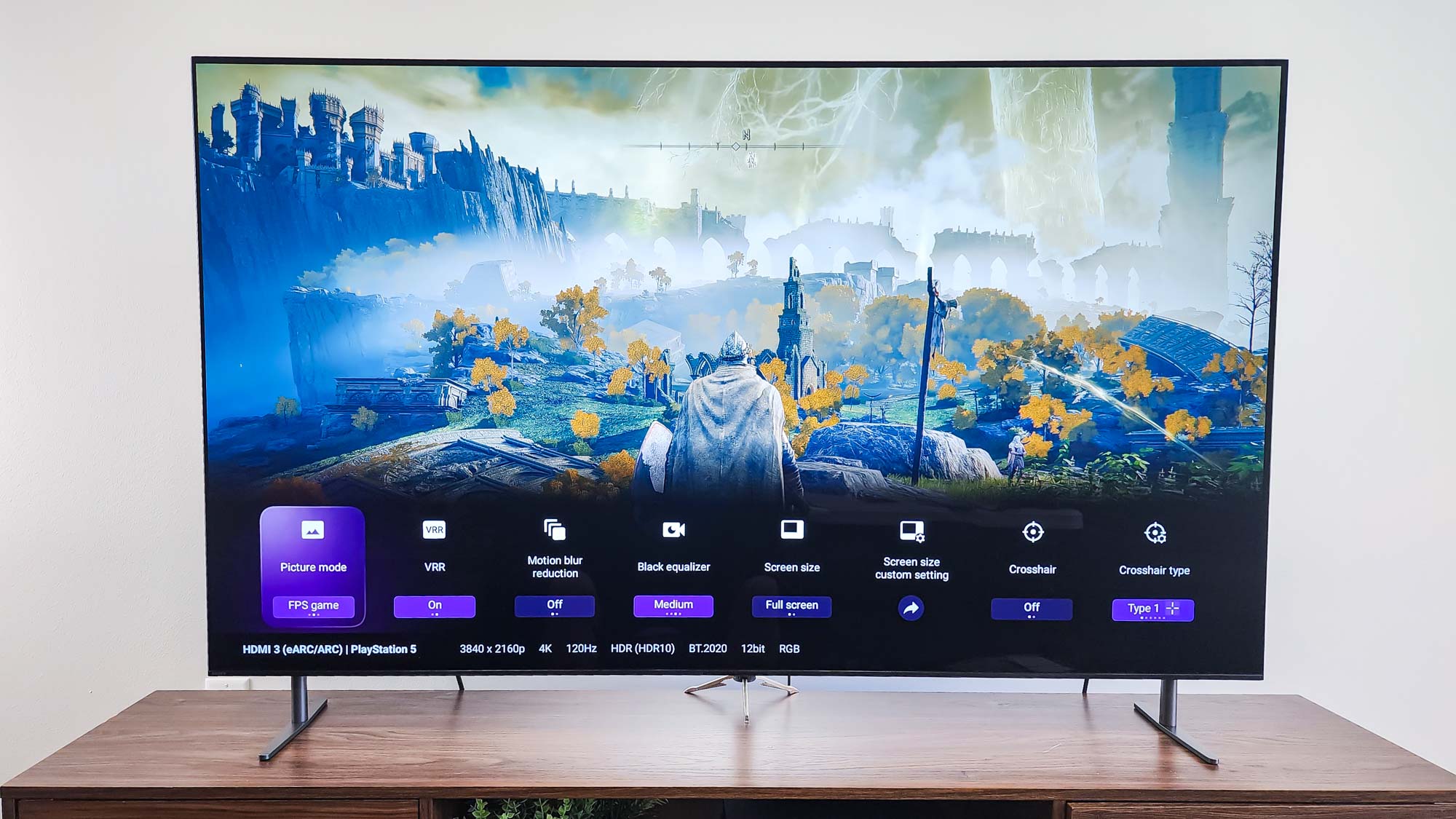
That only tells part of the story, though. You’d expect Sony, the makers of the PlayStation 5, to load its TV with gaming features, and you would be correct. In addition to the standard HDMI 2.1 capabilities, the Bravia 8 adds Auto HDR Tone Mapping (for optimizing HDR settings during PS5 setup), Auto Genre Picture Mode (for instantly switching to Game Mode), support for Dolby Vision for gaming, an elaborate gaming bar for tweaking key settings during play, and a screen size adjuster that lets you bring your expansive TV display down to more PC-monitor size (or any other percentage you choose).
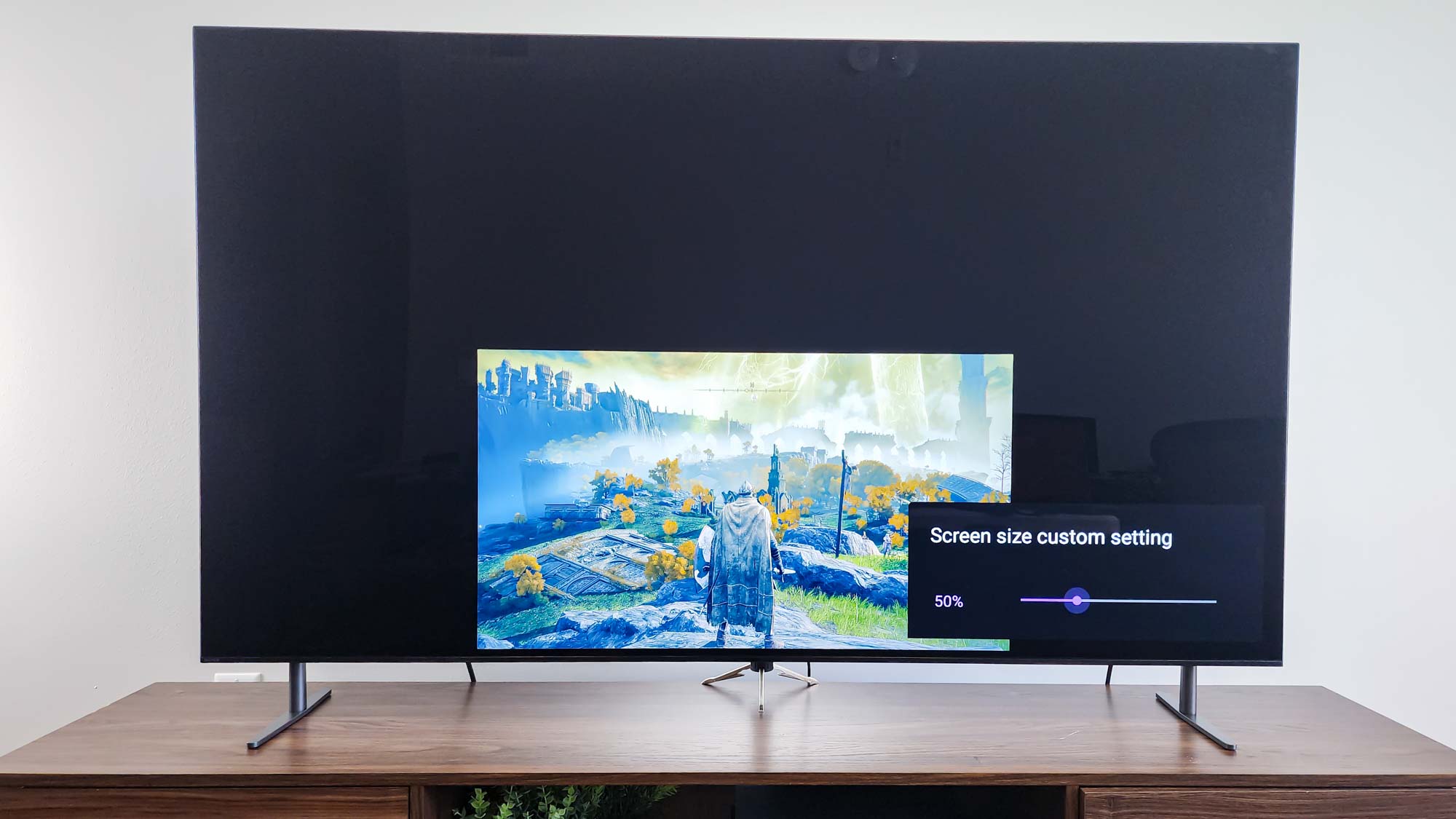
Elden Ring played beautifully on our PS5-equipped Bravia 8, with these features and others greatly enhancing gameplay. I’m not sure if it helped me live any longer than usual, but at least the game looked beautiful while I was still alive.
Sony Bravia 8 OLED TV review: Smart features
Google TV remains Sony’s smart operating system of choice, and it doesn’t offer much to quibble with. Connecting to the computing giant’s full ecosystem of offerings through your Google Account, you have instant access to all your searches and saved items, all easy to navigate through with the sleek, streamlined on-screen interface.
In addition to the default “For you” screen, which is populated with an astounding amount of relevant content, the top menu bar lets you easily switch to live TV, the apps collection, your content library, or Sony’s own branded offerings, or fire up Google Search. (You can also use the integrated far-field microphone or voice controls via the remote for this.) If there’s a TV operating system that makes better suggestions or presents them more clearly, I have yet to discover it.
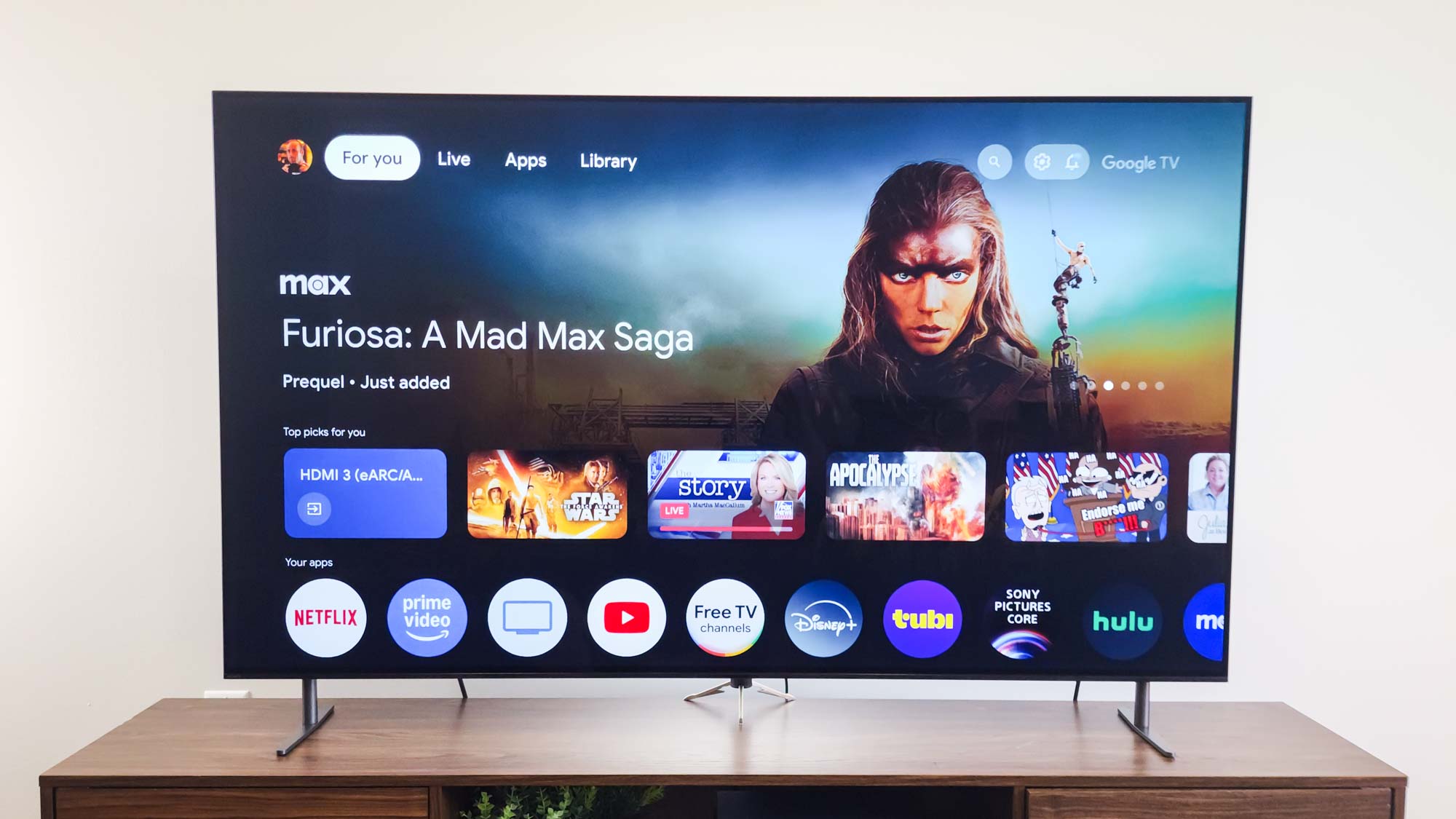
Sony Pictures Core is Sony’s own streaming service. It serves up titles from the company’s extensive catalog of movies and more at higher-than-average bitrates. Buying the Bravia 8 gives you five free credits to use over the next 12 months to buy movies, which is a nice extra. That said, the library is understandably limited, and maybe not the kinds of things you’ll want to consume endlessly.
At least Google TV itself ensures you’ll never want for something to watch, but if you do, you can always stream from mobile devices, use Apple AirPlay or Google Cast, or sample over-the-air broadcasts thanks to the ATSC 3.0 tuner (a rarity in new TVs).
Sony Bravia 8 OLED TV review: Remote
As is typical for Sony, the Bravia 8’s remote is no-nonsense: compact, clean, and well organized. It’s a mixture of black and dark gray, with blue flecks signaling its composition of a hefty amount of post-consumer plastic — a nice, environmentally friendly step.
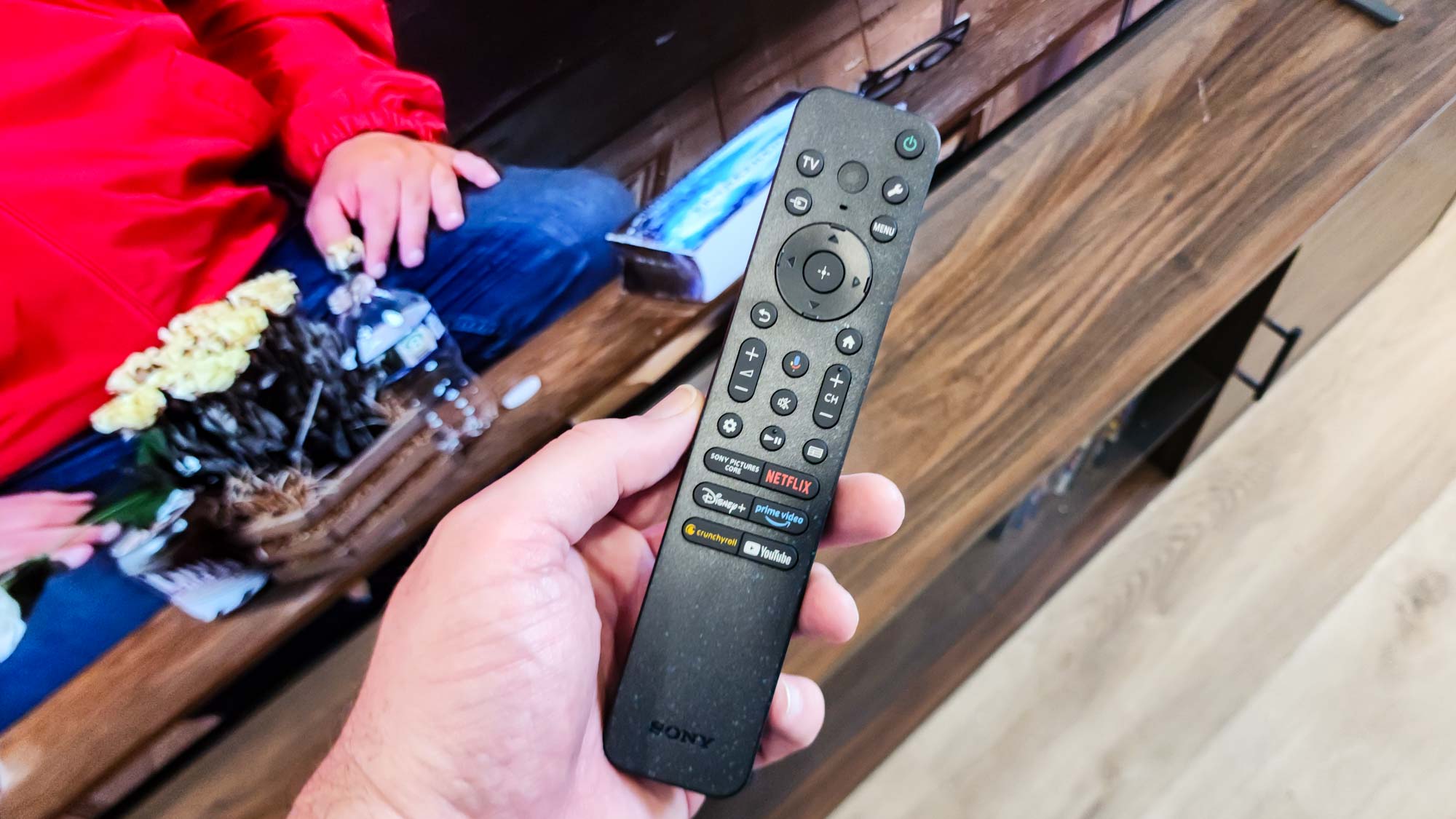
Controls are easy to find and exactly what you want most of the time, though it may take you a while to learn the differences between the three different menu buttons. The six shortcut keys at the bottom are for Sony Pictures Core, Netflix, Disney+, Amazon Prime Video, the anime-focused Crunchyroll, and YouTube.
The Bravia 8’s remote resembles the Bravia 9’s in almost every way, save two: The keys have no backlighting and it uses two AAA batteries instead of one that’s rechargeable via a USB Type-C cable. Still, it’s a handy way to control your TV.
Sony Bravia 8 OLED TV review: Verdict
No product, no matter how good, is ever for everyone, and this has rarely been truer of TVs in recent years than with the Sony Bravia 8. It does so many things so well, and its picture is so good in so many circumstances that it can’t help but stand out. The combination of its internal hardware, its abundant gaming functions, and Google TV make this set, like all of Sony’s, excitingly forward-thinking.
But is it worth it? Both Samsung and LG’s midrange OLEDs (the S90C and the C4) get brighter, offer a lower input lag and superior color accuracy out of the box, and cost either about as much as — or even less — than the Bravia 8.
Put in the right situations, the Bravia 8 is undoubtedly a compelling TV, but given what else is on the market, it’s a tough sell if you don’t need the very nuanced picture-enhancing technology it brings to the table.
Matthew Murray is the head of testing for Future, coordinating and conducting product testing at Tom’s Guide and other Future publications. He has previously covered technology and performance arts for multiple publications, edited numerous books, and worked as a theatre critic for more than 16 years.
-
Sairam S Reply
Wonderful TV .. Met my expectations . Unlike your comment my new Bravia 8 comes with remote with back light and charging port.. Sony is best interms of Sound and oled quality. It also has a feature to find your remote if you placed somewhere and forgot.. your tv will find your remote..admin said:The Sony Bravia 8 OLED TV brings to bear Sony’s full arsenal of the entertainment giant’s picture and gaming technologies — but the competition is stiff.
Sony Bravia 8 OLED TV review : Read more
